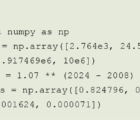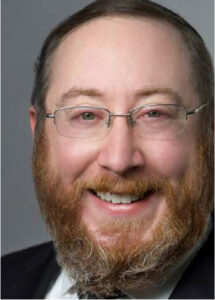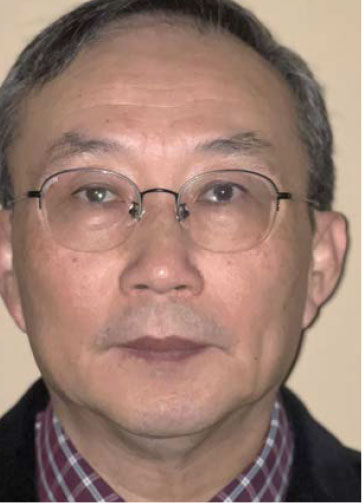
The work of two CAS Task Forces aims to take members’ abilities to new heights.
For each November/December issue of Actuarial Review, it has been our custom to honor volunteers who are making outstanding contributions to the organization. This year we highlight two groups whose work has furthered the CAS Envisioned Future for its members to be the sought-after sources for applying analytics to solve insurance and risk management problems globally: the Capability Model Task Force and the Property and Casualty Predictive Analytics (PCPA) Task Force.
Capability Model Task Force
As discussed in AR July/August 2023, the CAS Capability Model is a visual framework that articulates the traits, skills and knowledge important for most property-casualty actuaries, and it offers guidance on how users can enhance their capabilities.
Using the Model, CAS members and candidates will be able to self-assess the levels of their professional attributes in 18 different areas and then identify continuing education opportunities to further develop their expertise.
The Capability Model is composed of Traits, Skills and Content Areas, each of which contains six attributes organized according to three levels of proficiency, with Level 1 as the most basic and Level 3 the most advanced.
The model is backed by extensive research and input gathered from a variety of stakeholders, including a CAS membership survey as well as the Employer Advisory Council, Candidate Advocate Working Group, Risk Management Committee, Member Advisory Panel and CAS Board of Directors. A task force of volunteers and staff managed the model’s development.
“I saw the project as one of importance to the CAS … I believe in giving back to an organization that has given me my livelihood . . . .”
— Morgan Bugbee
ACS Ventures served as an outside vendor that created and analyzed the membership survey. They provided drafts using their expertise with similar concepts from the psychometric field and interpreted all the feedback from the actuaries to iterate the model until the task force was satisfied with the final results. The vendor also collated all existing research in the field to feed into the early model drafts.
From left to right, a few members of the Capability Model Task Force: Avraham Adler, Jonathan Charak and Mario DiCaro.
Morgan Bugbee, FCAS, MAAA, CSPA, explained that the greatest challenge was the charge itself — “How do we identify what content, traits and skills are, and will be for as far into the future as we can see, most critical and defining for actuaries?”
The process of creating the capability model gave Bugbee the opportunity to think about the long-term impact of decisions, both positive and negative on the CAS, and hear different perspectives on changes.
“It’s important to be able to listen to others’ perspectives because you might find important considerations that you overlooked,” Bugbee said.
Bugbee contributed to the group with his professional background in personal lines data science and predictive modeling.
“I also became interested in the insurtech space over the past five years and have worked at two insurtech carriers,” Bugbee said. “I also brought my passion for how technology can enhance both our profession and our industry.”
Bugbee appreciated the opportunity to build and deepen his professional network.

“There were a number of current and past leaders of the CAS involved in the task force, and the task force gave me exposure to those people that I wouldn’t have otherwise had,” Bugbee said. “I saw the project as one of importance to the CAS and one for which . . . I had strong views. I believe in giving back to an organization that has given me my livelihood, so when the task force came along, it was an easy decision for me to participate. By helping to deliver a project of importance to the CAS in an area I felt passionate about, it was very fulfilling to do so. I hope that many other actuaries can benefit from the Capability Model for years to come.”
Bugbee highly recommends other CAS members who are considering volunteering for a working group or task force do so.
Throughout the process of putting the Capability Model together, Mario DiCaro, FCAS, CERA, was reminded of how much he enjoys CAS members and the CAS staff. “I’m proud to be part of the CAS,” he said. “Although change sometimes seems inadequate compared to the pace of the world, I think the CAS is doing well at keeping up with industry needs. I’m glad to be an FCAS.”
Property and Casualty Predictive Analytics Task Force
Key CAS stakeholders identified that organizations are increasingly turning to predictive analytics to solve difficult problems. Recognizing that the CAS must also evolve by revolutionizing how it prepares actuaries with problem-solving skills for the future, the CAS Board of Directors approved a new predictive analytics requirement as part of the Admissions Transformation Plan.
The Property and Casualty Predictive Analytics (PCPA) project aims to give candidates and professionals in the actuarial field a deeper understanding of key concepts and to improve their predictive capabilities. The PCPA project had a soft launch in fall 2023 and will officially launch in May 2024. The PCPA will be an ACAS requirement beginning with the October/November 2025 exam administration.
The new PCPA project supports the CAS Strategic Plan by playing a key role in helping actuaries build skills for the future. The work of the PCPA Task Force ensures that the PCPA incorporates analytics, problem solving and domain knowledge into an exam plus project design that assesses both essential skills and streamlined practical application for predictive analytics.
From left to right, a few members of the Property and Casualty Predictive Analytics Task Force: Henry Cheng, Louise Francis, Bobby Jaegers, Jason Nikowitz and Ernesto Schirmacher.
To determine the best ways for actuaries to learn and apply predictive analytics, the task force brought together experienced actuaries who specialize in predictive analytics, along with data scientists, candidates and employers. Through interviews, focus groups and brainstorming sessions, the task force developed several iterations of the project, refining it with examples of real-world experience and as more feedback was gathered.
To create the assessment content for the PCPA, the task force looked to several members of the iCAS CSPA Exam 3 Committee and CSPA Project Committee for their expertise and experience in developing predictive analytics business cases, data sets and exam questions. The task force also expanded the volunteer group to include new FCAS members and senior data scientists for additional perspectives.
The CAS’s psychometric partner, ACS Ventures, has supported this effort in facilitating workshops to develop the exam content outline and providing training to exam writers and reviewers. ACS Ventures will also be providing psychometric review and analysis of exam and project performance to ensure the assessments are fair, reliable and appropriate for the target candidate.
PearsonVUE will be delivering the exam portion of the PCPA. The multiple-choice exam will be available on a continuous basis year-round, with results available immediately upon completion of the exam.
The Institutes will be the platform provider for the project portion of the PCPA, available on a quarterly window basis. This tool will allow candidates to download the case study and data sets to complete the project from home, as well as the tool to submit their final files for grading.
According to Alicia Burke, director of portfolio and product development for the CAS Institute, the most challenging aspect of the project was taking all the amazing, creative ideas and refining the best path forward.
“The PCPA Task Force led an initiative to create a brand-new product within the CAS credentialing pathway — something that has not been done in many years,” Burke said. “The approach that the task force is taking is fresh and innovative — the passion that each member brings to the group is inspiring,” Burke said. “We look forward to what new opportunities this product will provide future candidates.”
 “The volunteers were key in bringing their expertise and vision to the discussion and getting us to this exciting point where we have designed the exam content outline and are bringing the PCPA to life,” Burke said. The most rewarding part of PCPA project for Burke has been the opportunity to meet and collaborate with brilliant and dedicated volunteers. “[They] are passionate about predictive analytics and designing the optimal offering to enhance the ACAS experience,” she said.
“The volunteers were key in bringing their expertise and vision to the discussion and getting us to this exciting point where we have designed the exam content outline and are bringing the PCPA to life,” Burke said. The most rewarding part of PCPA project for Burke has been the opportunity to meet and collaborate with brilliant and dedicated volunteers. “[They] are passionate about predictive analytics and designing the optimal offering to enhance the ACAS experience,” she said.
PCPA Task Force Member Bobby Jaegers, ACAS, CSPA, was thrilled to be working on such an innovative project that tests candidates’ understanding of predictive analytics and gives candidates real-world examples that encourages them to apply the techniques they have studied.
“It has been very rewarding collaborating with other experts in the field of predictive analytics to develop a project that will challenge candidates and prepare them for predictive analytics problems they may see in their career as an actuary,” Jaegers said.
Members of the Capability Model Task Force
Avraham Adler
Morgan Bugbee
Jonathan Charak
Mario DiCaro
Richard Florian
Barry Franklin
Li Li Lin
Chester Szczepanski
Members of the Predictive Analytics Task Force
Henry Cheng
Brian Fannin
Louise Francis
Bobby Jaegers
Todd Lehmann
Jean Li
Jason Nikowitz
Ernesto Schirmacher




















